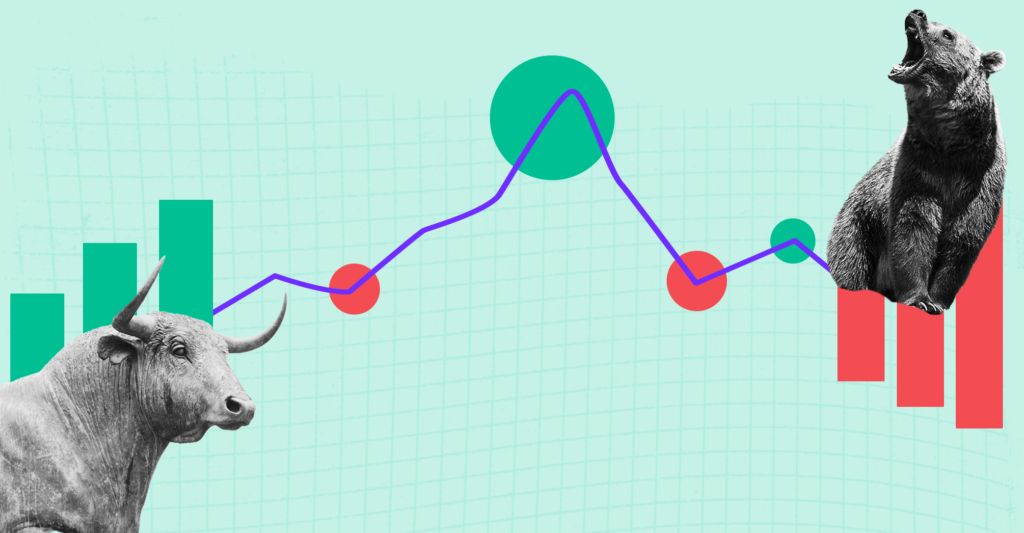Last Updated on Jan 2, 2023 by Anjali Chourasiya
Nifty 50, Nifty 500, BSE – Do you know what these are? These are called stock market indices. It is a mathematical construct comprising a group of stocks strategically selected to represent an entire pool of companies listed in the stock market. In this article, let’s understand the stock market index in detail, its importance, types, and more.
Table of Contents
What is an index?
With over 7,400 stocks and assets listed on the seven stock exchanges in India, it is nearly impossible to track the growth of each asset separately. However, with the help of an index, this can be done with less trouble.
An index is a basket of top-performing stocks selected from different market sectors that acts as a mirror of the performance of the market as a whole. It gives you the ease of gauging the performance of a particular stock against the benchmark index.
A stock market index is an indicator of its respective stock exchange. The most common stock exchanges in India are National Stock Exchange (NSE) and the Bombay Stock Exchange (BSE). The Nifty is the benchmark for the stocks listed in the NSE, and the Sensex acts as the benchmark for stocks in the BSE.
Understanding the market index
Market indexes are used to represent the performance of a market or a segment of a market. The value of a market index is calculated by taking the average of the prices of the stocks that make up the index and then adjusting for any dividends that the stocks may have paid. This value can be used as a benchmark to compare the performance of a particular stock or portfolio of stocks to the overall market.
The grouping of the companies to form an index can be based on sectors, market capitalisation, and market strategies.
Importance of a stock market index
The market index majorly represents market mood. The index reacts to electoral, political, and geopolitical events, mirroring the sentiment in the market. Besides this, the following explains the importance of an index.
Helpful in the stock selection for investment
With over 7,000 listed companies, it isn’t very easy to make stock picks to add to a portfolio without a comprehensive view of the performances of the sector and industry apart from individual stock.
The stock market index acts as a differentiator and groups stocks in an organised manner based on classification criteria. This criterion could be—market cap, sector, industry, company type, etc. For example, Nifty IT is a collection of the top 10 companies from the IT sector. Grouping similar stocks in an index makes it easier for investors to draw a comparison and measure performance against the markets.
Acts as representative
Major stock indices, Sensex and Nifty, are traditionally used by all investors to understand the market mood and sentiments as a whole. Similarly, a sectoral index movement reflects the direction of the particular sector.
For example, Nifty Pharma which represents the pharmaceutical sector, displayed a rising trend during the peak of covid. However, the number of very large pharma companies (by market capitalisation) is fewer and therefore, changes in Nifty Pharma have little impact on the Nifty 50 itself as the heavyweight Nifty IT or Nifty Bank. Hence, an index can be read separately or in relation to each other.
To understand the market mood, you can use Tickertape’s Market Mood Index (MMI). In case you want to dive deeply into it, read this – Market Mood Index (MMI): Time Your Investments Better.
Peer comparison
Indices serve as a dependable point of reference against which one can compare the performance of stocks before investing. This enables you to find out the performance of the stocks against the benchmark index, its performance in comparison to other companies in the sector, the performance of the entire sector, etc.
For example, suppose you wish to invest in the banking sector. In that case, you may assess Nifty Bank and find out which stocks have outperformed the benchmark index or have a greater stock valuation, which is doing better in terms of liquidity, etc.
Help passive investors
Picking the right stocks and keeping track of their performance requires time and a great deal of research. It doesn’t seem viable for passive investors who are looking to invest without constant monitoring. Hence, an index helps them understand the market or a market segment without putting too much time or effort.
Types of stock market indices
Talking about India, we have the following types of indices:
Benchmark indices: A benchmark Index is a group of securities used to measure the performance of other stocks or securities in the market. The Indian stock market is synonymous with the Nifty and Sensex. BSE Sensex, with 30 companies, and NSE Nifty, with 50 companies, are the two popular benchmark indices.
Sectoral indices: These indices account for different sectors of the Indian economy. The idea here is to group stocks belonging to the same sector under one index. Some examples are Nifty PSU bank, Nifty IT, Nifty Metal, BSE PSU bank, etc.
Market capitalisation-based index: This index category consists of companies meeting specific market capitalisation criteria. For example, NSE midcap 100 and S&P BSE midcap will consist of companies having a market cap exceeding Rs. 5,000 cr., but limited to Rs. 20,000 cr. Companies with a market cap of up to Rs. 5,000 cr will feature in BSE smallcap and NSE smallcap, while large-cap companies that command over Rs. 20,000 cr. will feature on indices like S&P BSE large-cap.
How does a market index select stocks?
If an index is a group of stocks, how does it arrive at a value? Let’s find out.
When an index goes up or down, it means that stocks under that index have performed better or worse. The movement of an index does not go up or down based on one stock. For instance, if Reliance Industries Ltd., which is listed on both, Nifty and Sensex, goes up by 5% during one trading session, the index will not reflect the 5% growth as the index has various other stocks as well, and they influence the movement of the stock as well.
Different stocks in an index carry different weightage. This weightage value helps in determining the value of an index. But how do indexes weigh stocks? Well, it depends on the stock selection criteria.
There are primarily two factors by which stocks are picked:
Market capitalisation
When the market cap is the base of the stock selection strategy, companies with similar market cap are grouped together in an index. Among those, companies with the largest market cap have a bigger weightage on the index’s value, while stocks with lesser market cap don’t influence the index as much.
In India, indices usually use a free-float market cap for assigning weights to their stocks. It is the company’s total value measured in the outstanding shares it has issued. To calculate free-float market capitalisation, use the following formula:
Free Float Market Capitalisation = Market Capitalisation x Free Float Factor
Where,
Market Capitalisation = the market value of the company
Market Capitalisation = Share price per share x number of shares issued by the company
Free Float Factor = percentage of total shares a company issues that are freely available to the public to trade. This can also mean the total outstanding shares of the company. It excludes all shares that the promoters, the government, group companies, etc., hold.
Price
Similar to the market capitalisation weightage method, some indices in the world use the price of a stock to give weightage in an index. Simply put, companies with a higher stock price have a higher weightage and impact than the lower-valued stocks in the index. For example, one of the global share market indices, Japan’s Nikkei 225, is price-based.
Can you invest in stock market indices?
It’s not possible for you to invest directly in stock market indices. But you can indirectly trade them through various investment products and strategies.
Recreating the index yourself
It is probably the hardest of the methods. You can find out the composition of the benchmark indices and create your personalised portfolio assigning similar weights to the stocks as the benchmark index does. Though it’s quite an uphill task because it asks for periodic adjustments as the stock weightage in the indices keeps changing based on daily traded prices, you may need to align your portfolio accordingly.
Trading futures contracts
The NSE commenced trading in index futures on 12 June 2000. Futures contracts are the derivative instruments you can invest in to gain exposure to the Nifty 50. They are called derivatives because they derive their values from the underlying asset. The index futures contracts are based on the popular market benchmark Nifty 50 index.
Investing in index mutual funds
They are one of the easiest and low-cost ways to gain exposure to indices. Index funds mirror the composition of the benchmark index that the mutual fund tracks in the exact same weightage too. They are passive funds and generate returns comparable to the index they imitate.
Conclusion
The stock market index represents selected stocks from all sectors, which can help analyse and gauge market mood and sentiment. They are several types of indexes, many catering to individual sectors. Of all, Nifty and Sensex are the most popular. These indices are majorly used for peer comparison and as a standard measure of stock against the market. To learn about Sensex in detail, read Sensex – What Is It, How To Calculate, and List of 30 Sensex Companies.
FAQs
What is an index in the stock market?
Who uses the market index?
What are index funds?
Index funds are subject to the same risk as the securities in the index it tracks. To know about the best Index funds in India, read Best Index Funds in India To Invest in 2022.
How many stock exchanges are there in India?
1. BSE Ltd
2. Calcutta Stock Exchange Ltd.
3. Metropolitan Stock Exchange of India Ltd.
4. Multi Commodity Exchange of India Ltd.
5. National Commodity & Derivatives Exchange Ltd.
6. Indian Commodity Exchange Limited
7. National Stock Exchange of India Ltd.
- Best Fundamentally Strong Penny Stocks (2024) - Apr 10, 2024
- Best Liquor Stocks in 2024 - Apr 4, 2024
- All Pharma Penny Stocks in India: Pharma Shares Below Rs. 50 - Apr 2, 2024







